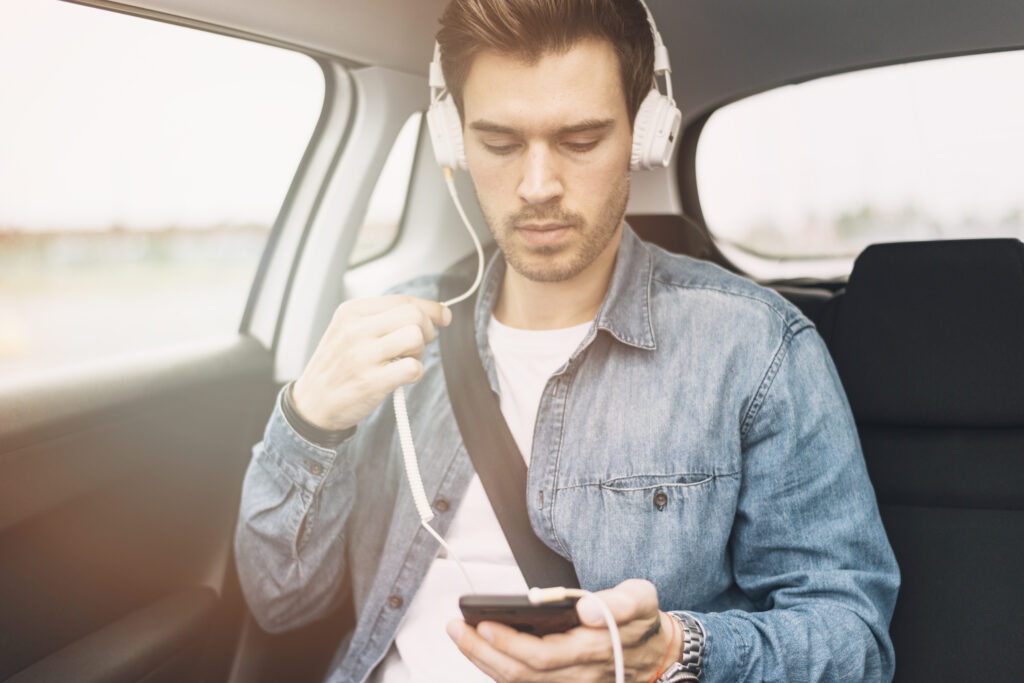Can you drive with headphones on?
Have you ever wondered if it’s safe to hit the road with your favorite tunes blasting through your headphones?
It’s a common dilemma for many drivers, especially in an era where music is just a click away. But is it a harmless habit or a risky maneuver?
Let’s delve into the contentious question: Can you drive with headphones on?
As we navigate through this article, we’ll uncover crucial insights from leading safety authorities and explore the potential legal ramifications of driving with headphones.
So, fasten your seatbelt and get ready to unravel the multifaceted layers of this intriguing debate. Can you really drive safely with headphones on, or is it a risk not worth taking?
Let’s find out.
Can you drive with headphones on?
Driving with headphones on is a contentious practice with potential dangers. In many states, it’s strictly prohibited due to safety concerns.

Wearing headphones impairs awareness of surroundings, increases the risk of accidents, and may lead to legal consequences.
It’s crucial to prioritize safety, follow local traffic laws, and opt for alternatives like in-car audio systems or hands-free options to ensure a focused and secure driving experience.
Read: Do headphones cause ear infections?
But now let us see what states it’s illegal to wear headphones while driving.
What states is it illegal to wear headphones while driving?
In numerous states, the act of wearing headphones while driving a motor vehicle is strictly prohibited under all circumstances.
These states include Alaska, California, Illinois, Louisiana, Maryland, Minnesota, Rhode Island, Virginia, and Washington.
It’s noteworthy that in these regions, the use of headphones while driving could potentially result in criminal charges.
Violating this law may lead to charges such as negligent driving or distracted driving, especially if a law enforcement officer observes a driver wearing headphones.
It’s essential for motorists in these states to be aware of and adhere to these regulations to ensure both their safety and legal compliance on the road.
Also read: Can you wear headphones with an ear infection?
Illegal, with exceptions
There are often exceptions to the rules, and this holds true for the regulations surrounding the use of headphones while driving.
In states where restrictions on headphone use aren’t as comprehensive, there are typically allowances for single-ear Bluetooth headsets, facilitating phone conversations without compromising safety.
Moreover, states are generally cautious about restricting hearing assistive devices like hearing aids or cochlear implants, recognizing their importance.
It’s interesting to note that several states go beyond explicit bans and specify that listening to music through earpieces or headphones is discouraged, even if not explicitly prohibited.
In some regions, like Montana and New Mexico, additional restrictions may apply depending on the specific town you’re in.
Reflected in the map above, most states with “some restrictions” permit headphone or earphone use as long as only one ear is covered, or if the device is used in a wired manner.
It’s worth acknowledging that the evolution of technology often outpaces the development of laws, and it may take time for regulations to catch up with the realities of newer tech.
Where Is Wearing Headphones Completely Legal?
In thirty-two states and the District of Columbia, there are currently no specific laws prohibiting the use of headphones or earbuds while driving, as reported by AAA.
These states include Alabama, Arkansas, Connecticut, Delaware, Hawaii, Idaho, Indiana, Iowa, Kansas, Kentucky, Maine, Michigan, Mississippi, Missouri, Montana, Nebraska, Nevada, New Hampshire, New Jersey, New Mexico, North Carolina, North Dakota, Oklahoma, South Carolina, South Dakota, Tennessee, Texas, Utah, Vermont, West Virginia, Wisconsin, and Wyoming.
In these regions, drivers have the flexibility to use headphones without legal restrictions, emphasizing the variance in regulations across different states regarding in-car audio accessories.
The Dangers of Driving With Headphones:
Driving with headphones has become a contentious issue, with advocates pointing to enhanced focus and a personalized driving experience, while critics emphasize the significant dangers associated with this practice.
1. Impaired Awareness:
Wearing headphones diminishes the ability to hear crucial external sounds, such as sirens, horns, or screeching tires, compromising overall awareness of the driving environment.

2. Reduced Reaction Times:
The distraction of headphones can lead to delayed responses to changes in traffic conditions or unforeseen obstacles, increasing the risk of accidents.
3. Legal Consequences:
In many states, driving with headphones is not only hazardous but also illegal, with potential consequences including fines, points on the driving record, and even criminal charges.
4. Increased Accident Risk:
Studies suggest that drivers wearing headphones are more likely to be involved in accidents due to the distraction posed by immersive audio experiences.
5. Inability to Hear Emergency Vehicles:
Headphones can obstruct the ability to hear auditory signals from approaching emergency vehicles, posing a risk to the driver and impeding first responders.
6. Escalation of Distracted Driving:
Engaging with audio content while driving contributes to the broader issue of distracted driving, diverting attention away from the primary task of driving.
7. Lack of Auditory Navigation Cues:
Auditory cues are essential for navigation, and wearing headphones eliminates these cues, making it challenging for drivers to stay on course and follow directions effectively.
8. Social and Moral Responsibility:
Choosing to wear headphones while driving can be seen as a disregard for the social and moral responsibility associated with operating a vehicle safely.
In summary, the dangers of driving with headphones encompass impaired awareness, legal repercussions, increased accident risk, and a lack of auditory cues critical for safe navigation.
Prioritizing safety and adhering to traffic laws remain paramount for responsible and secure driving.
Frequently Asked Questions: Can you drive with headphones on?
Is it legal to wear headphones while driving in the UK?
No, it is illegal to wear headphones while driving in the UK. This practice can impair awareness and poses safety risks, leading to penalties if caught.
Can you talk on a headset while driving?
In many places, using a hands-free headset is legal, allowing drivers to talk on the phone while keeping their hands on the wheel for enhanced safety.
Is it illegal to drive with headphones in PA?
Yes, it is illegal to drive with headphones in Pennsylvania. Such restrictions aim to maintain driver focus and prevent potential hazards on the road.
Is it illegal to wear headphones while driving in New York?
Yes, wearing headphones while driving is illegal in New York. This regulation is in place to ensure drivers remain fully attentive to their surroundings for safer road conditions.
Conclusion
In conclusion, the question “Can you drive with headphones on?” prompts a complex consideration of safety, focus, and legal implications. While opinions on the matter may vary, it’s essential to prioritize safety on the road.
The diverse perspectives explored in this article shed light on the potential risks and benefits associated with driving with headphones.
As you embark on your journey, keep in mind the importance of staying alert and attuned to your surroundings.
Can you drive with headphones on? The answer lies not just in legality but in making choices that prioritize your safety and the safety of those around you.
;



